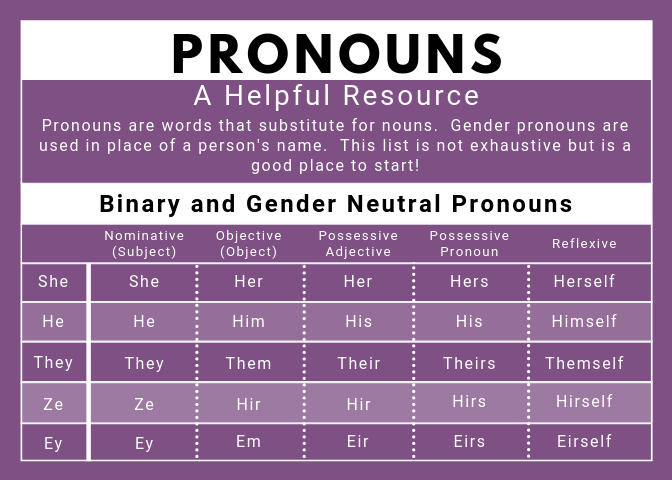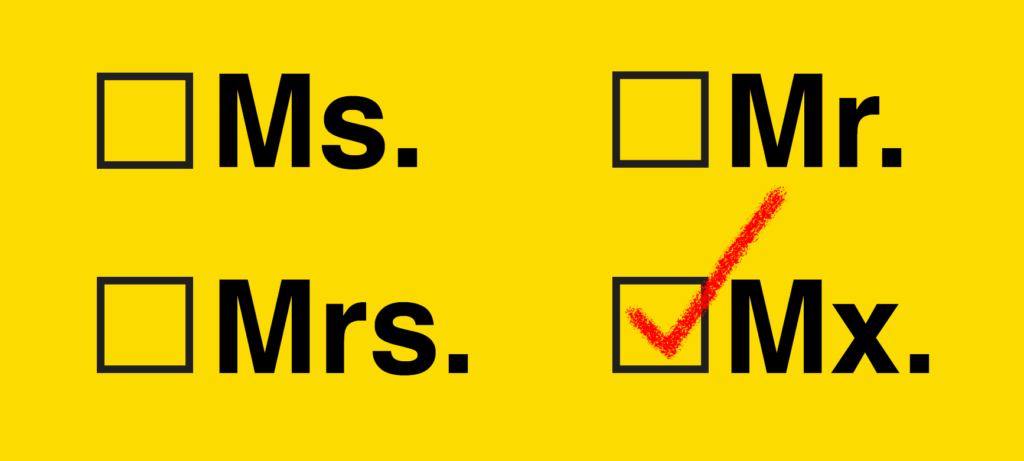Gender Pronouns
Have you ever heard the question, “What is your pronoun?”
Gender pronouns indicate a gender that you identify as. Common gender pronouns include she/her/hers, he/him/his, and they/them/theirs. However, just like human emotions and consent, gender pronouns are complex. It’s not as clear as just saying “yes” or “no” or calling someone “she”, “he”, or “they” if that’s not what they prefer. That’s why it’s important to ask a person what their gender pronoun is and use that pronoun when referring to them. Here are some tips when using gender pronouns:
- If you’re unsure, ask; do not assume.
- If you make a mistake, quickly correct yourself. Mistakes happen from time to time, but make sure you correct yourself right away. Examples:
- “He—I mean, she is a great person.”
- “I think she likes—they like chocolate.”
- If you hear someone mistaken a person’s pronoun, correct them. A person’s pronoun must be respected in all situations, not just when they’re around or when you’re referring to them. Make it a habit to correct someone else if they make a mistake and that they respect that person’s pronoun as well.
- If someone corrects you, thank them.
There are many different gender pronouns, some of which are shown in the picture below.

Honorifics

Honorifics are used out of respect and courtesy for people of position and rank. They exist in English and other languages. Common English honorifics are Mr., Ms., Mrs., Dr., Coach, and Professor. Non-binary people may choose to use the honorific Mx. as shown in the picture on the right. It can be pronounced as “mix” or “micks”.
These are just some of the gender pronouns you may identify with and is by no means a comprehensive list. It is important to respect and use one’s gender pronoun. In addition to this page, check out the Sex and Gender and Sexual Orientation and LGBTQ+ pages for information about and ways you can respect others’ identities.
Content reviewed by Mx. Patricio Battani, MPH (Director of Health Equity, Waikīkī Health)
Last Updated: September 4, 2020 by Phyllis Raquinio
Sources
- Gender Pronouns Photo: Pronouns 101. (n.d.). Retrieved July 17, 2020, from https://lbgtrc.msu.edu/educational-resources/pronouns/
- Mx Honorific Photo: Kesslen, B. (2019, January 20). Ms., Mr. or Mx.? Nonbinary teachers embrace gender-neutral honorific. Retrieved July 17, 2020, from https://www.nbcnews.com/feature/nbc-out/ms-mr-or-mx-nonbinary-teachers-embrace-gender-neutral-honorific-n960456